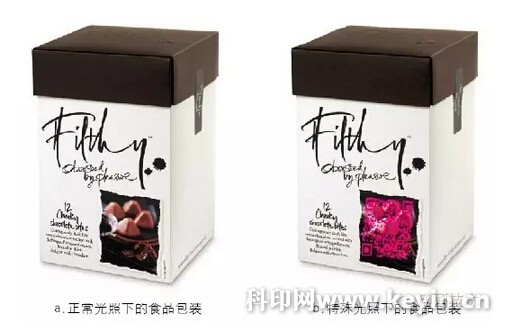1. Three-dimensional code anti-counterfeiting technology
As the name suggests, the three-dimensional code anti-counterfeiting technology is developed from the traditional two-dimensional code anti-counterfeiting technology. With the depth of color as the third dimension, it can compile data of arbitrary hexadecimal data, and its anti-counterfeiting carrier has higher information capacity and security. .
According to the principle characteristics of the three-dimensional code, the original packaging design can be directly compiled, combined with the invisible ink technology, so that the three-dimensional code is "invisible" in the original packaging image to achieve the invisible anti-counterfeiting effect. The realization principle is as follows: firstly, the image information of the original package is extracted and compiled, and compiled into a three-dimensional code, and then the original image is printed first in printing, and then the corresponding two-dimensional code is directly printed and printed using the invisible ink, and almost no increase is added. Cost. Under normal circumstances, the invisible two-dimensional code is not visible (as shown in Figure 1a), it can be visualized under special lighting or heating conditions (Figure 1b), and the original image is composed of a complete three-dimensional code to achieve anti-counterfeiting function without affecting The beauty of the original packaging.

2. Random texture anti-counterfeiting technology
Random texture anti-counterfeiting technology, also known as mathematical anti-counterfeiting technology, was first applied to paper anti-counterfeiting. By adding random fibers in the papermaking process, paper with specific characteristics was produced. The principle of random texture anti-counterfeiting technology is shown in Figure 2. According to this principle, we can use printing to achieve similar anti-counterfeiting effects. First, use the mathematical model to get a random curve or graph, then print it onto the product packaging and enter it into the database. Consumers can use the camera of the mobile device to collect the anti-counterfeit logo on the package, and then the information in the database on the server. Match identification.

Due to the randomness and uniqueness of the anti-counterfeiting feature of the random texture anti-counterfeiting technology, it is difficult for the counterfeiter to imitate and copy it, so the anti-counterfeiting effect is extremely high. In addition, designers can design anti-counterfeiting information into graphics, patterns, and artistic treatment, so that it has anti-counterfeiting features, while not losing the beauty, highlighting product features, attracting consumers' attention, and thus promoting sales.
3. RF tag anti-counterfeiting technology
The most common RF tag anti-counterfeiting technology is RFID anti-counterfeiting technology. A complete RFID system consists of electronic tags, readers and antennas. Its anti-counterfeiting principle is to issue and authorize electronic tags according to encoding and encryption, so that each product Has a unique code number to achieve uniqueness of recognition. RFID anti-counterfeiting technology has the characteristics of simple, easy to identify, high security and reliability. However, due to the need for special identification equipment, the cost is too high. Currently, it is mainly used in logistics transportation and high-end commodity packaging.
NFC anti-counterfeiting technology is an integrated upgrade of RFID anti-counterfeiting technology. Different from the RFID anti-counterfeiting technology, the NFC anti-counterfeiting technology can be integrated into the NFC mobile phone. The data transmission has two-way, good interactivity, and the tag can repeatedly read and write the anti-counterfeiting verification process, adding a "third-party certification body", which is better. Traceability. (Editor: Pang Junqi)
The above content is reproduced in the " Printing Technology " official WeChat (Printech1957), authorized by the company to publish, copyright, piracy will be investigated!
diagonal pliers,locking pliers,slip joint pliers,pipe wrench
Henan Probon Tools CO.,LTD , https://www.tapemeasuretools.com
